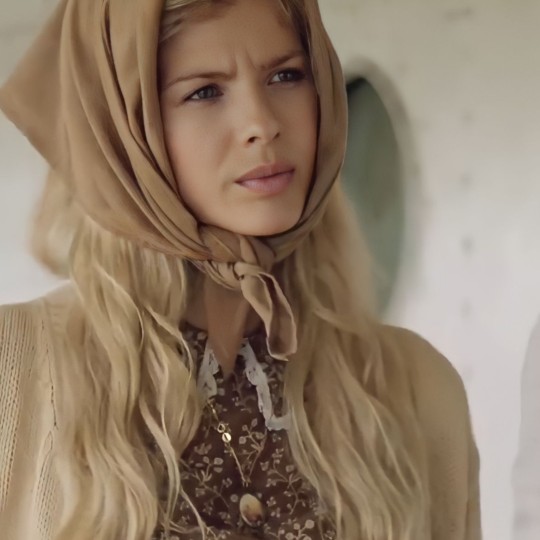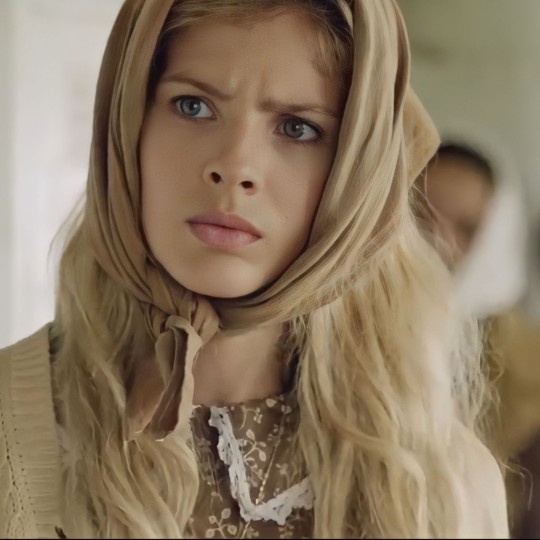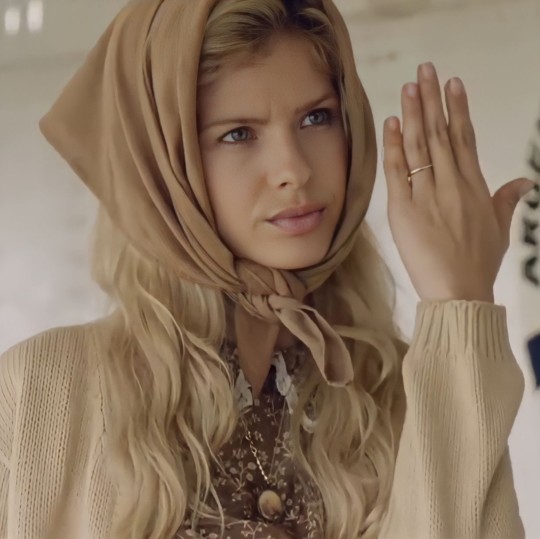#atav icons
Text
ATAV icons









like or reblog if you use or save.
#argentina tierra de amor y venganza#ATAV#ATAV ICONS#China Suárez#China Suárez icons#candela vetrano#cande Vetrano icons#Delfina Chávez#Delfina Chávez icons#raquel zimmermann#Raquel Zimmermann icons#Lucía Morel#Lucía Morel icons#Anna Moretti#Anna moretti icons
5 notes
·
View notes
Photo






𝐷𝑒𝑙𝑓𝑖𝑛𝑎 𝐶𝘩𝑎𝑣𝑒𝑠 𝑖𝑐𝑜𝑛𝑠 #𝟤
5 notes
·
View notes
Photo









like or c @margotrzbie
#delfina chaves#delfina chaves icons#icons delfina chaves#icons#request#atav#lucia morel#lucia morel icons#icons lucia morel#sem psd#argentina tierra de amor y venganza
76 notes
·
View notes
Photo

The famous "Bar Suit"
By 1940, war had changed the face of fashion significantly. The romantic full-skirted silhouette of the 1930’s was held back, and it wasn’t until 1947 where Christian Dior brought back a new silhouette, also called ‘The New Look’.
Dior launched a new collection of the House of Dior, the new collection went down in fashion history. The signature shape was characterized by a below-mid-calf length, full-skirt, pointed bust, small waist, and rounded shoulder line. The new silhouette soon became immensely popular, influencing fashion and other designers for many years to come.
Christian Dior presented a collection of wasp-waisted and hip-padded designs. The American press immediately dubbed it the "New Look." The collection was a repudiation of the styles of the 1920s and 1930s, and it was also clearly indebted to the styles and body-shapers of the late nineteenth century. "The Bar Suit" was considered the most iconic model in the collection, manifesting all the attributes of Dior's dramatic atavism.
The famous “New Look” photograph of Dior’s bar suit was immortalized, according to fashion historian Jonathan Walford – not in 1947, but in 1957 by model Renée Breton in a photo taken by Willy Maywald.
This suit was an updated version made by Dior in 1955 for a lecture tour. It has a notched collar, instead of the original shawl collar from 1947, and flares out at the waist similar to the suit displayed at the V&A museum. Breton did model for Dior from 1947, but not in the bar suit.
The Original New Look Photo
The original bar suit (photo above) by Dior was reproduced for Vogue magazine April 1947 edition by Serge Balkin. The jacket has Six buttons – not five. This is displayed by the Met Museum. Walford also notes that in the Maywald photo, the shoes worn by Breton were captured in another photo taken in 1957.
I do love a good detective story!
Daily inspiration. Discover more photos at http://justforbooks.tumblr.com
19 notes
·
View notes
Photo

A ninth century seated Taishakuten at Tō-ji in Kyoto.
“Perhaps one of the more endearing qualities of Buddhism is its ability to syncretize with seemingly opposed ideologies. We see this in the Japanese concept of honji suijaku, where Indian (read: Buddhist) deities were given the forms of native Shintō kami to ease the conversion of the Japanese people. The transition was so effective that Japanese culture is now arguably inseparable from its Buddhist practices.
When Buddhism was still in its early development, many deities were adapted into its pantheon from Vedic and Hindu sources. These included Brahma (Jpn: Bonten), Kubera (also Vaisravana; Jpn: Bishamonten or Tamonten), and the various manifestations of Shiva (for example, Mahesvara). They were all grouped into the classification of celestial being (Skt: deva; Jpn: tenbu) as attendants to and protectors of the buddhas (Jpn: butsu) and bodhisattvas (Jpn: bosatsu) who dwell on the slopes and peak of Mount Sumeru (Jpn: Shumisen), the center of the Buddhist cosmos.
Shakra, abbreviated from “Shakra, king of the devas” (Skt: Sakro devanam indrah), originates from the Vedas as the king of the gods of the atmosphere. His name is an epithet of Indra, or the great Hindu god of war, storms, and rain, who was incorporated into the Buddhist pantheon as a guardian of the Law. As a powerful protector deity, Shakra dwells in the Palace of Correct Views (Skt: Vaijayanta; Jpn: Zenkenjō) at the center of his royal city Sudarsana, which lies on the slopes of Sumeru within the sensuous realm (Skt: kamadhatu; Jpn: yokukai).
According to the Flower Garland Sutra (Skt: Avatamsakasutra; Jpn: Kegonkyō), and especially in the teachings of the Chinese Huayan school, a gemmed net appears above Shakra’s palace. Called the Indrajala or Indra’s Net, this infinitely vast tool consists of an infinite number of knots, each of which contains a jewel with an infinite number of facets. Each facet reflects back the infinite other jewels and their reflecting facets. It serves as a metaphor for the interconnectedness and intercausality of the Buddhist universe.
But perhaps Indra’s most pervasive contribution to Buddhist iconography is that of his diamond mace (Skt: vajra; Jpn: kongō), an indestructible and irresistible weapon of clarity and power. Indra, as god of the storms and likely derivative of the Greco-Roman Jupiter/Zeus, wields the lightning bolt. And as the lightning bolt falls from the celestial realm, the friction reduces it to a material not unlike the diamond. This diamond was then forged into a physical implement to be held by Shakra, his emanations, including Vajrapani (Jpn: Shūkongōshin), and numerous other deities.
In Buddhist art throughout East Asia, Shakra is subservient to the historical Buddha, Shakyamuni (Jpn: Shakamuni); he, with Brahma (Jpn: Bonten), guided the practice of Shakyamuni’s earlier incarnations and ministered to him in his final life before achieving buddhahood. In fact, the pair administered his first bath when he was a child. Especially in Indian Buddhist iconography, Shakra sometimes holds an umbrella over the historical Buddha to shield him from the Sun, or may also carry his alms bowl.
But even more than an attendant, Shakra serves as a vicious and immutable protector. He is occasionally depicted at the center of the Four Guardian Kings, both as their chief (Vaisravana leads them in Shakra’s absence) and as their superior to whom they report the activities of those in the lower realms of humans, asuras, animals, hungry ghosts, and hellish beings.
Buddhist practitioners in Japan probably first acknowledged Shakra in the late seventh or early eighth century. There he was named Taishakuten and, though he was never the focus of an independent cult, he may appear with Bonten as attendants to a main icon in a triad. The most famous example of this is in the Never Empty Lasso Avalokiteshvara (Jpn: Fukūkenjaku Kannon) set in the Sangatsudō of Tōdai-ji; Taishakuten stands on Kannon’s left side. The triad dates to the Nara period (710–94). Taishakuten also appears as the principal image (Jpn: honzon) of the Shibamata Taishakuten, a temple in Katsushika, Tokyo. The temple was founded in 1629; it is likely this representation of Taishakuten was created specifically for this temple and has remained there to this day.
The sculptural depiction of Taishakuten in the Tō-ji temple is considered a Heian period (794–1185) masterpiece. The deity appears as a martial figure seated on an elephant with a single-pronged kongō in his right hand. The elephant, though more often associated in Japan with the bodhisattva Fugen (Skt: Samantabhadra), is an atavism to Erawan, the 33-headed elephant that served as Indra’s animal vehicle in earlier Indian art.
Taishakuten also appears among the jūniten, guardian deities adapted from Hinduism to protect the myriad buddhas and bodhisattvas in esoteric Buddhist practice, primarily in Japanese mandara (Skt: mandala) paintings.”
By Michael Van Hartingsveldt
#buddha#buddhism#buddhist#art#iconography#history#japan#japanese#asia#asian#religion#religious#heian#toji#taishakuten#indra#shakra
19 notes
·
View notes
Photo

Christian Dior | ‘Bar Suit’ | c. 1947
——— In 1947, Christian Dior presented a collection of wasp-waisted and hip-padded designs. The American press immediately dubbed it the “New Look.” The collection was a repudiation of the styles of the 1920s and 1930s, and it was also clearly indebted to the styles and body-shapers of the late nineteenth century. “The Bar Suit” was considered the most iconic model in the collection, manifesting all the attributes of Dior’s dramatic atavism.
———
@metmuseum accession no.
C.I.58.34.30
52 notes
·
View notes
Photo

The Bar Suit worn by Dior's house model Renee Breton, 1947
In 1947 Christian Dior presented a collection of wasp-waisted and hip-padded designs. The "Bar" suit was considered the most iconic model in the collection, manifesting all the attributes of Dior's dramatic atavism.
Featuring rounded shoulders, a cinched waist and a long pleated wool full skirt, backed with cambric, which is exceptionally heavy. The 'New Look' celebrated ultra-femininity and opulence in women’s fashion. Harper’s Bazaar editor-in-chief, Carmel Snow, named Dior’s revolutionary direction, ‘The New Look.’
146 notes
·
View notes
Text
Today's topic: "Faces" and Iterations of Being
There are various ideas about how spirits manifest. The Greeks thought gods walked the earth in mortal disguises. In Hiduism, gods can assume Avatars, mortal forms that they inhabit yet are independant from them. Point being, no one is quite sure how daemonic forces can manifest, espicially as physical entities. To help solve this, I think we can use a quaint, supposedly Japanese, proverb.

While I doubt the origin is actually Japanese, the point is that we, as people, have multiple layers, stages at which we organize our images. Conceptually, this not only applies to layers of image but layers of self as well, suggesting that the human spirit can be further refined into key unifying abstractions that embody a unique experience of consciousness. I believe such a setup is likely applicable to the deities we create for ourselves.
I propose the following "faces", subject to update;
Mortal-Material Avatar Face--the deity assumes a naturalistic form, looking to appear as a human or move with some secrecy in the world. This can include people, animals, or mundane objects. Variations aside, this is the least alien, most social-submissive form.
Divine-Material Avatar Face--In this form, the deity may possess certain symbolic features but remain mostly naturalistic. This form can also consist of an obviously divine avatar, such as Krishna. This can also include human depictions of the deities, which rely on symbology and icons to depict the entity while building off a naturalistic form. This group is the largest, containing most known images of deities and daemonic entities.
Liberated Face--this form acts as a kind of middle ground as deities abstract towards their truest form. These forms may build on human forms, but can play with them and adjust the layout and components to display atavisms, nested icons, and deeper emanations. Color theory becomes important here, helping to explain a more abstract figure. These are extremy variable, and may change even between different people or viewpoints. Can also be called Waking, Natural, or Unveiled Faces.
Exalted Face--the deity at its most abstract, these forms are similar to Biblically Accurate Angels in that naturalistic structure is abandoned for abstract, geometric, and/or mathematical constructions of pure energy, iconography, social consciousness, and natural phenomenon. These forms are often alien and amorphous, exhibit dynamic movement and forms of expression, and skirt the edge of materiality. This is the deity in its truest form, a unique and pure expression of their contents, icons, and composed "self". These forms, especially, skirt the boundary between mind and matter, mostly indicating the abstracted image of a thoughtform seen through the veil.
True Face--Deities, in their truest form, exist as a conceptualized consciousness symbollically tied to a concept or natural phenomenon, like a star in the night. True forms are rarely perceptible as anything other than ideas.
0 notes
Text
The Baldurs gate travel maps are a weird atavism that I haven't really seen much since... It really feels like an open world type of design (ie, this is a continuous stretch of country you have to cross to get places) except it's always this little cutaway piece... That has an icon on the map? It's very strange, but charming, I love those. They always have little secrets which is something I enjoy in a game, it's like a reward for being diligent.
0 notes
Note
oi! não sei se responderam de volta a ask, mas eu vi ela e vou responder pelo outro anon, e sim, life on mars é !!!muito!!!! bom, assisteeee, juro que não vai se arrepender. e também, será que você, por favor, fazer icons de voice 2? se não puder eu entendo! muito obrigada mesmo de toda forma 💞 tenha um bom dia, chuchu.
oiiiiiiiiiiiiiiiiiiiiiii desculpa por ver so agr! eu atav afim d ecomeçar mas to cheia de dorama pra ver e quando eu puder eu posto icons de voice
0 notes
Photo






𝐴𝑙𝑏𝑒𝑟𝑡 𝐵𝑎𝑟𝑜́ icons #1
#bruno salvat#atav#argentina tierra de amor y venganza#icons#albert baro icons psd#psd#icons novelas#el trece#bruno atav#brunia
14 notes
·
View notes
Text
Late empire
the passivity of collapse
anti-imperialism in ancient rome and ancient ireland (two sides of the same coin)
equality and political violence
complexity, bureaucracy, and energy return on investment
war, natural disaster, famine, and plague
The Red Queen Effect
number of earths required
passivity in the face of
ignorance, arrogance, apathy
the pain of this is something to do with forgetting and ignoring. Enforced. People are not allowed to fight. They are required to survive. The empire tells them what they need to do, and they go into the wilderness if they want to disobey. If they are lucky enough to be able to find any wilderness. Is there any green place left? Is there any wildness? Is there anyone who remembers how to be wild, or anywhere they could go if they did remember? Is this permissable to say in the academy? Or is it a form of subterfuge?
Where can we go when we are banned from all progress? Where can we go when we are banned from all memory, from all transparency? 1984 is real and now. We are being poisoned. We are being exterminated, and to acknowledge it or to learn about it is tantamount to treason. It makes one unable to do normal work.
In the suburbs, there is no job you can walk to. No way to make money without burning fossil fuel in the ‘car’. Things are changing, but not fast enough. Go get a job at the welder. They spew poison into the sky making decorations for the wealthy. Oh wait, you can’t: there are no jobs. So blame it on your compadre. Blame it on your fellow man or woman. Kick them out of the country, ban them, chain them up in the basement, convert them into slaves to fuel your anger. Or, more likely, passively assent to their enslavement. You can’t afford to own slaves. But if you allow the rich to make slaves of your compadres, at least you won’t have to compete against them as workers.
When the situation gets dire enough, political violence will come for us all. Hitler said to win wars by subterfuge, terror, assassination, infiltration, propaganda, etc. The enemy is defeated by culture, weaponized. The culture follows the weapon and precedes it, but the culture is an essential accessory to the weapon. The culture is necessary for the war to follow. How do we fight this? How do we resist this? How do we get free, or become more free, or preserve our freedom?
The collapse of late empire, therefore, does not collapse into anarchy. It does not collapse into wildness. (Or maybe it does collapse into those things, but only occasionally, only partially, only somewhat. Only if we help it along.) Empire collapses into feudalism. The civic spirit is dead. The pretention of freedom is dead. The specter of republicanism, occasionally invoked, is like a banner to drape over the parapet. We can no longer afford to build the parapet. We can only dress it appropriately for the new era. We can survive on the conquests of our ancestors, praising them in rhetoric and atavism, while we ourselves languish, giving our souls over to the tyranny of new kings. This kings will wait years, or centuries, before admitting that they are kings. They will continue to play the games of the old days, the games which were invented and designed in times of freedom, but which always bore within them the traces of the fascism of ages past. The games of freedom, the games of peace, will disappear from memory. They will die out by design. They will be assassinated. The kings will claim that these peaceful and loving games died out because they were not successful at competing. Chess was always a game of killing and moral binaries. Undertale will be erased by false accusations and new modes of distribution. It will be hidden outside a new market, which will masquerade as being the only market.
Satan is the name they will give to everything they hate, everything that claims to oppose them, or seems to oppose them, or fails to embrace them sufficiently. If it does not profess its loyalty loudly, it is useless to the feudalist system. The new feudalism is not a matter of ideology. There is no liberalism or conservatism. No right or left. No good or evil. There is only pragmatism: the ideology of strategy, tactics, and victory. Everything opposed to me is Satan. Everything aligned with me is God.
If your constituents are liberals and progressives, call your enemies “homophobic” and “racist.” Hire a media firm to do it. The apparatus of propaganda and persuasion. The production of consent. If your constituents are conservatives and traditionalists, call your enemies “big government” and “communist.” Hire a media firm to do it. The apparatus of propaganda and persuasion. The production of consent. Again, I say, there is no ideology anymore: only victory. Because the elected politicians, the democrats and the republicans, the elite and the masters, are all a single icon and a single ideology: the ideology of power and nothing else. The ideology of the-death-of-everything-except-me-and-my-family. The ideology of let-us-be-the-ones-to-repopulate-the-earth. They all hire the same media firms. Each media firm uses the same tactics. While the products may be different, the production-process is the same. The enemy, therefore, is deception.
The tactics of deception ever change. That is the nature of deception. There is a dance of masks and shadows. Smoke and light. There is something to fix on and something to conceal. You are shown one thing to conceal another. You are shown one thing to conceal that thing itself. You watch the screen and you think it cannot harm you but you do not realize how you are being harmed because the screen itself, in its primary function, presents itself as a being which is beneficial and pleasurable. This is the method of hypnosis: the hypnotist must form an accord with the subject. This is called “animal magnetism” or “rapport” or “trust.” The military has discovered certain technologies that they never revealed to the public. This is the military-industrial-propaganda complex. Advertising and military propaganda have exactly the same source: understanding of human psychology. The military applications of Freud were realized immediately, researched in secret, and never revealed. Ditto Mesmer. (Ditto Tesla, but that’s not relevant here.)
If I sound like a conspiracy theorist, that’s fine. This isn’t fact. This is free-verse poetry. I’m just rambling amusingly. I only aspire to point at an element of truth, not to be exactly correct. If I happen to be exactly correct about anything, it is an accident. I will soon be assassinated.
I am already being assassinated, by means of the environment. If the smog in the air doesn’t kill me, maybe the Perfluoro-whatever in the water will. If not that, then perhaps the famine, perhaps the war, perhaps the draft, perhaps the plague. Whatever. I live and I die and I write and I love and so on. I write tirades. I am often correct and usually wrong and always totally doomed. I love you, dear reader, and I love my life and this universe and this planet and this world and the challenge of setting it all right.
0 notes
Note
( JENNIE KIM, CIS FEMALE, SHE/HER ) — ✧ that looks like SKYLAR MCCOY/ARTEMIS CREED! they’re the TWENTY-TWO YEAR OLD DAUGHTER of HANK MCCOY/TAKEN BY VICTOR CREED. [ they are also a UNDERGRAD & PSYCH TA at paragon. ] i hear they’re ADROIT & JOCULAR, but tend to be CRUEL & SELFISH. her file says that her power is GENETIC ATAVISM & GENIUS INTELLIGENCE. { blo’s an ICON } / naomi’s ex gf, akis ride or die, vickis tutor, n davids xmen wcs !
— ✧ ACCEPTED and welcome to paragon, SKYLAR MCCOY / ARTEMIS CREED ! JENNIE KIM is now taken ! don’t forget to follow everyone on this list ! you have 24 hours to send in your account or your spot will be reopened !
— ✧ CHECK OUT OUR MONTH-LONG MARKET !

#wolverine rp#xmen rp#x men rp#mutant rp#next gen rp#marvel rp#accepted#jeezperseus#[ added to pages ]
0 notes
Photo

Christian Dior | ‘Bar’ | c. 1947 In 1947, Christian Dior presented a collection of wasp-waisted and hip-padded designs. The American press immediately dubbed it the "New Look." The collection was a repudiation of the styles of the 1920s and 1930s, and it was also clearly indebted to the styles and body-shapers of the late nineteenth century. "The Bar Suit" was considered the most iconic model in the collection, manifesting all the attributes of Dior's dramatic atavism. ・・・ #thenewlook #fashion #diorsnewlook #art #dior #christiandior #couture https://www.instagram.com/defunctfashion/p/Bu7oImogsbf/?utm_source=ig_tumblr_share&igshid=15y23wl8b9r1t
138 notes
·
View notes
Photo






𝐷𝑒𝑙𝑓𝑖𝑛𝑎 𝐶𝘩𝑎𝑣𝑒𝑠 𝑖𝑐𝑜𝑛𝑠 #𝟣
#delfina chaves#atav#lucia morel#lucia atav#icons#psd#eltrece#novelas#delfina chaves icons#lucia morel icons
1 note
·
View note
Photo

Christian Dior | “Bar” | c. 1947 • • • In 1947, Christian Dior presented a collection of wasp-waisted and hip-padded designs. The American press immediately dubbed it the "New Look." The collection was a repudiation of the styles of the 1920s and 1930s, and it was also clearly indebted to the styles and body-shapers of the late nineteenth century. "The Bar Suit" was considered the most iconic model in the collection, manifesting all the attributes of Dior's dramatic atavism. • • • #whattheywore #historicalfashion #fashion #fashiondesign #fashionhistory #historyoffashion #vintagefashion #art #vintage #historicfashion #defunctfashion #historicalfashion #costume #costumedesign #couture #costumehistory #christiandior #dior #diorsnewlook #newlook #1940sfashion #barsuit
#defunctfashion#costumehistory#fashiondesign#christiandior#1940sfashion#vintage#vintagefashion#historyoffashion#barsuit#historicalfashion#costume#costumedesign#art#dior#couture#diorsnewlook#whattheywore#fashionhistory#fashion#historicfashion#newlook
73 notes
·
View notes